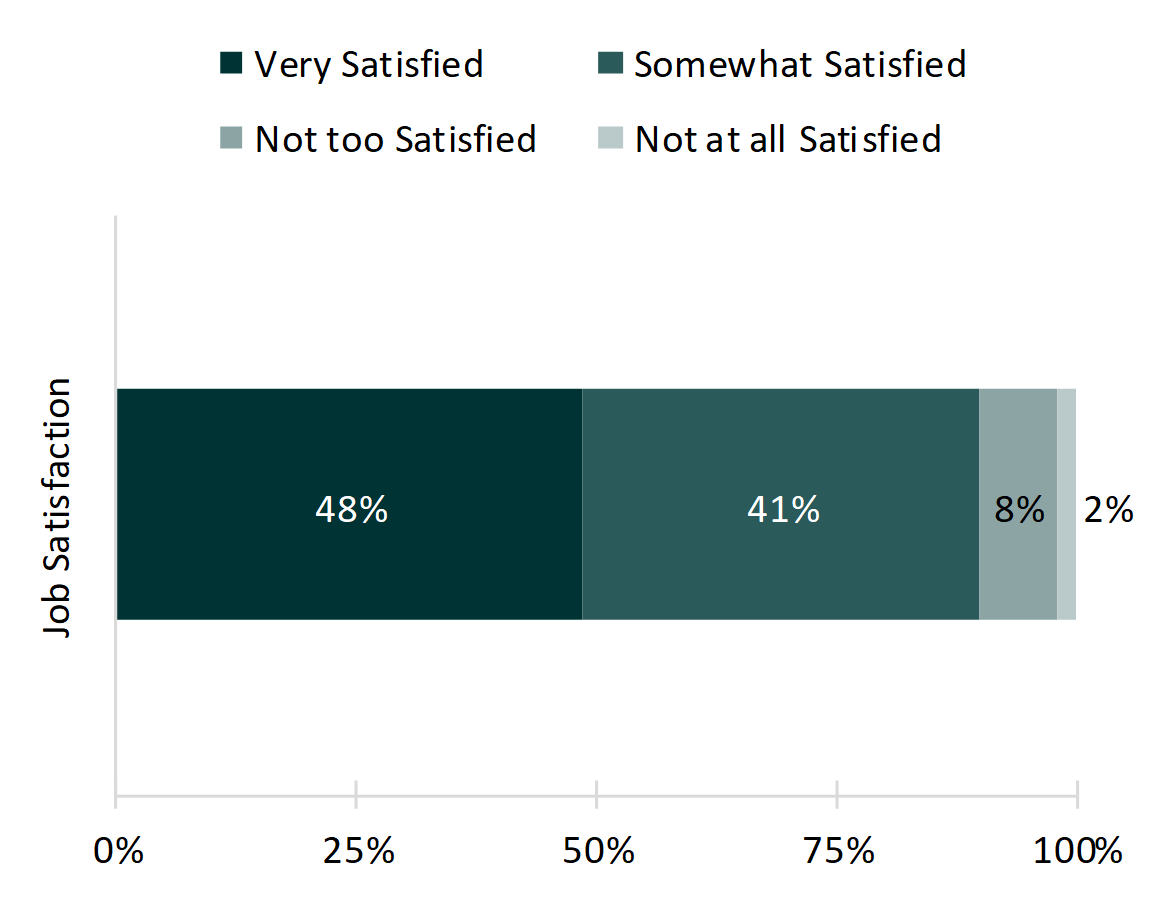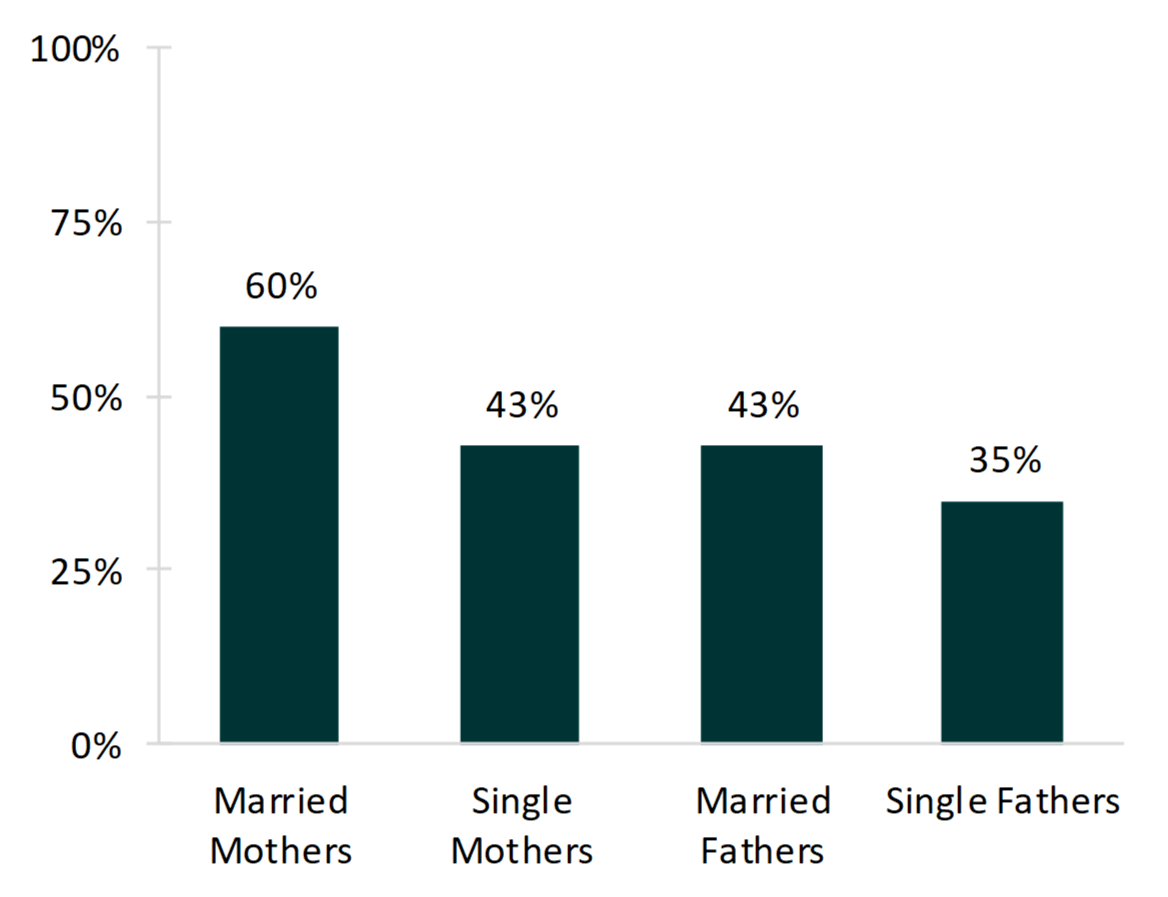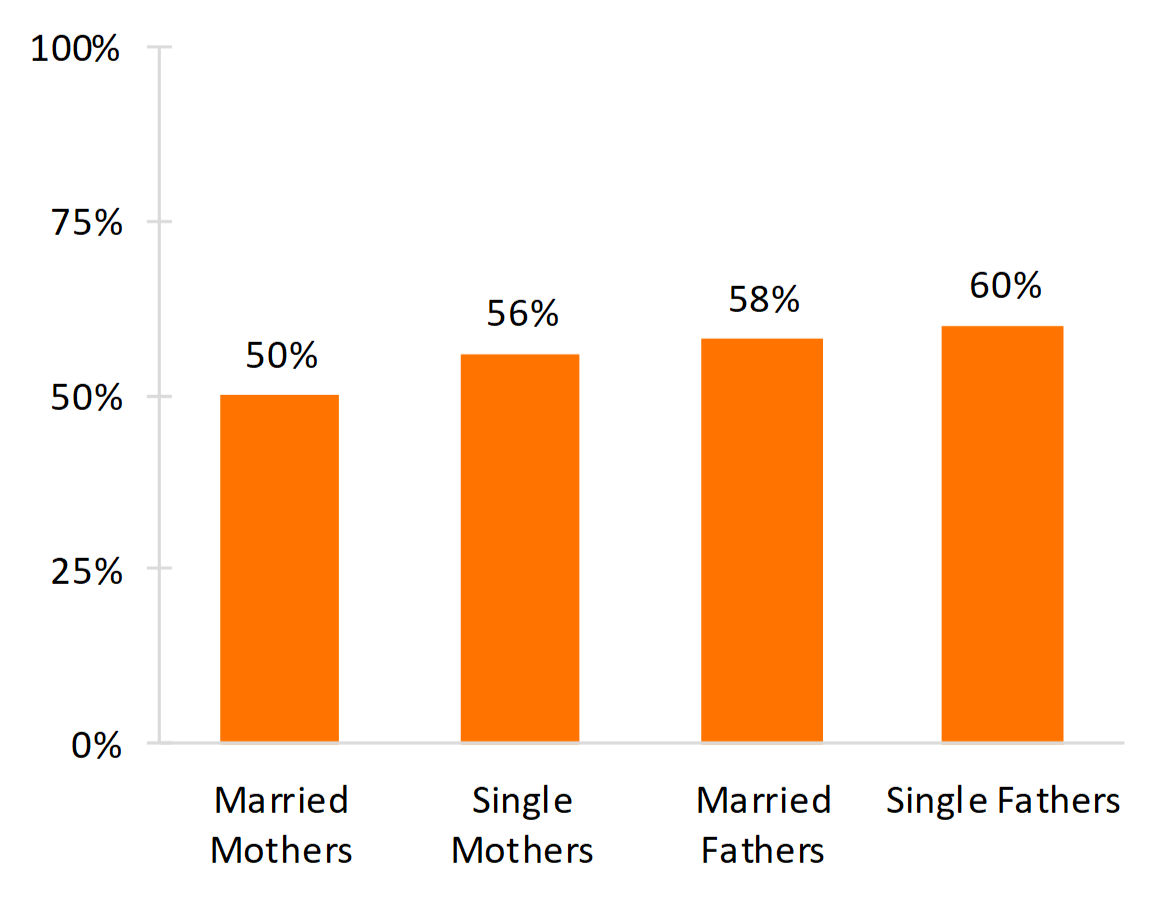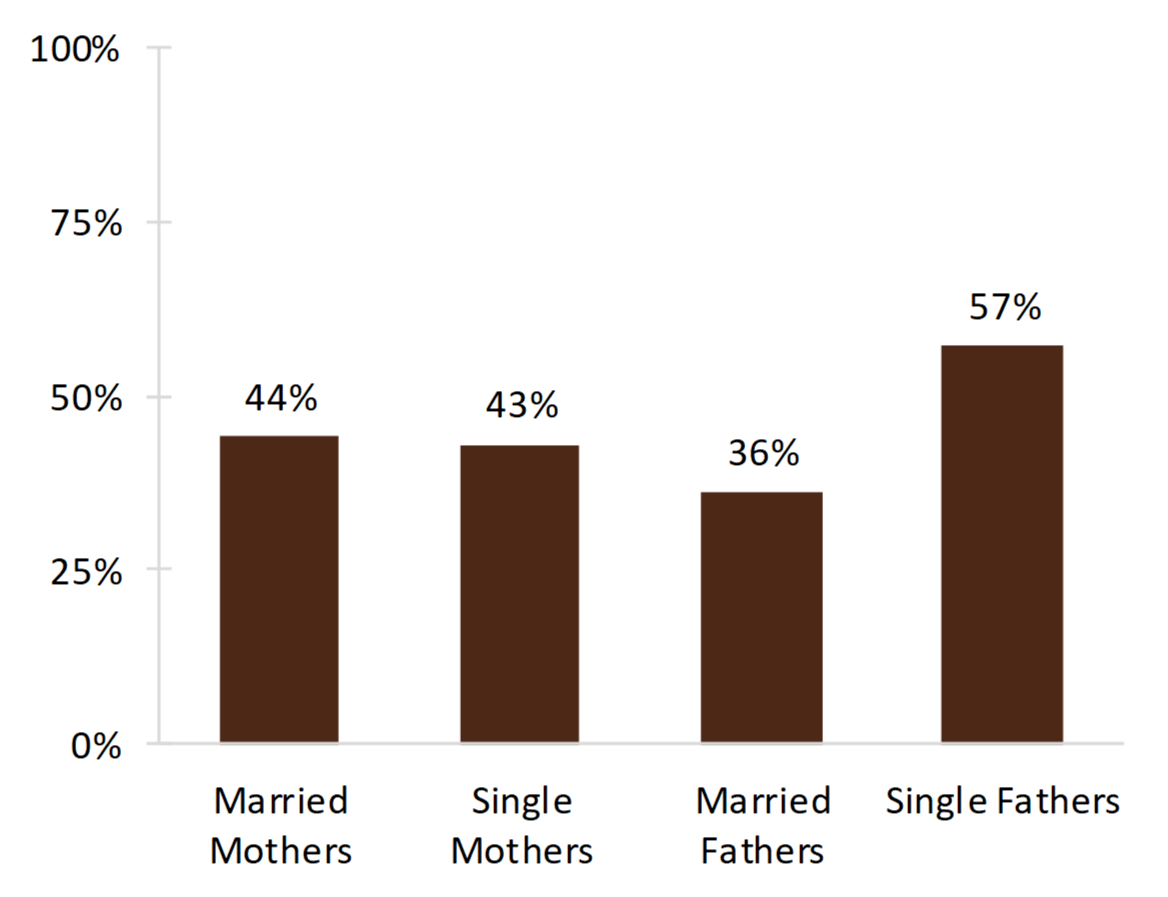Job Satisfaction and Interference with Family Life Among Mothers and Fathers
Family Profile No. 11, 2018
Author: Colette A. Allred
Today, most parents work – of the nation’s 34.2 million families that include children under the age of 18, nine out of ten have at least one parent employed. In three out of five married-couple families with children under 18, both parents are employed, and seven out of ten unmarried parents with children under 18 are employed (Bureau of Labor Statistics, 2017). The challenges associated with combining work and family are well-known (Bianchi and Milkie, 2010). This profile uses data from the 2014 General Social Survey to examine job satisfaction and conflicts between work and family life among working parents with at least one child under 18 living at home.
Degrees of Job Satisfaction Among Working Parents
Overall, the majority of working parents are satisfied with their jobs.
- Nearly half of working American parents with at least one minor child at home reported being “very satisfied” with their jobs.
- Only 10% of working parents reported being not satisfied with their jobs.
Figure 1. Job Satisfaction Among Working Parents with at Least One Child Under 18 in the Household

Working Parents Who Were “Very Satisfied” with Their Jobs, by Gender and Marital Status
A larger share of married parents reported being “very satisfied” with their job compared to single parents.
- Married mothers were more satisfied than single mothers, and married fathers were more satisfied than single fathers.
- Married mothers stand out, with 60% reporting being “very satisfied” with their jobs. In comparison, less than half of all other parents reported such high levels of job satisfaction.
Figure 2. Percentage of Working Parents with at Least One Child Under 18 in the Household Who Were “Very Satisfied” with Their Job

Conflicting Work and Family Lives, by Gender and Marital Status
- Married mothers reported the least interference between their jobs and their family lives.
- Fathers, regardless of marital status, had the largest share—at nearly 60%—who reported their job interfered with their family life often or sometimes.
Figure 3. Percentage of Working Parents with at Least One Child under 18 in the Household Who Said Job “Often” or “Sometimes” Interfered with Family Life

- Married fathers were least likely to report that their family life interfered with their work obligations (36%), while single fathers reported the highest level of conflict (57%).
- Mothers, regardless of marital status, fall between married and single fathers at about two-fifths who reported interference.
Figure 4. Percentage of Working Parents with at Least One Child under 18 in the Household Who Said Family Life “Often” or “Sometimes” Interfered with Job

Data Source
- Smith, T. W., Marsden, P. V., Hout, M., & Kim, J. General Social Surveys, 1972-2014 [machine-readable data file] /Principal Investigator, Tom W. Smith; Co-Principal Investigator, Peter V. Marsden; Co-Principal Investigator, Michael Hout; Sponsored by National Science Foundation. --NORC ed.-- Chicago: NORC at the University of Chicago [producer]; Storrs, CT: The Roper Center for Public Opinion Research, University of Connecticut [distributor], 2015. 1 data file (57,061 logical records) + 1 codebook (3,567p.). -- (National Data Program for the Social Sciences, No. 22).
References
- Bianchi, S. M., & Milkie M. A. (2010). Work and family research in the first decade of the 21st century. Journal of Marriage and Family 72(3), 705-725. Bureau of Labor Statistics (April 2017). Employment characteristics of families - 2016. United States Department of Labor.
Suggested Citation
- Allred, C. A. (2018). Job satisfaction and interference with family life among mothers and fathers. Family Profiles, FP-18-11. Bowling Green, OH: National Center for Family & Marriage Research. https://doi.org/10.25035/ncfmr/fp-18-11.
Updated: 11/07/2025 02:39PM


